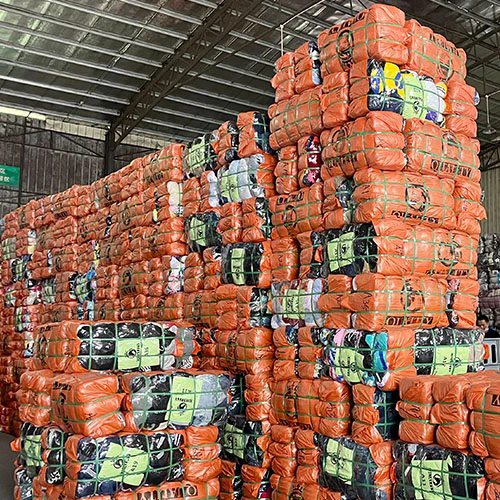Why Are Used Clothes the Sustainable Choice for a Better Future?
2024-11-20
In a world increasingly focused on sustainability, the demand for environmentally friendly practices is reshaping how we shop and dress. One trend that stands out is the rise of used clothes—a choice that goes beyond fashion and enters the realm of responsibility. But why should used clothing matter to you and the planet?
Let’s uncover the reasons why opting for pre-loved garments is not just a smart choice but a crucial one for the future.
What Are Used Clothes, and Why Are They Popular?
Used clothes, often referred to as secondhand clothing, are garments that have been previously owned and worn. They are sold or donated through thrift stores, online platforms, and local markets. Over the years, used clothing has gained immense popularity for several reasons:
1. Affordability:
- High-quality clothing at a fraction of the price of new items.
2. Unique Style:
- Vintage and rare finds that help individuals express their personality.
3. Environmental Benefits:
- Reducing textile waste and lowering the demand for fast fashion production.
How Does Choosing Used Clothes Help the Planet?
1. Reduces Waste:
- The fashion industry produces millions of tons of waste each year. By reusing clothing, we divert textiles from landfills.
2. Saves Resources:
- Manufacturing new clothes consumes massive amounts of water, energy, and raw materials. Used clothing requires no additional resources to produce.
3. Cuts Carbon Emissions:
- The production and transportation of new garments contribute to greenhouse gas emissions. Buying used reduces this environmental footprint.
4. Promotes Circular Economy:
- It keeps clothing in circulation, extending its life cycle and reducing the need for constant production.
What Are the Benefits of Wearing Used Clothes?
1. Cost Savings:
- Get designer or high-end fashion pieces at a fraction of the original price.
2. Personalized Style:
- Find unique items that set you apart from mainstream trends.
3. Quality Over Quantity:
- Many older garments are made with superior craftsmanship and materials compared to today’s fast fashion.
4. Support for Local Communities:
- Thrift shops and secondhand markets often support charities, local businesses, and social initiatives.
What Should You Consider When Buying Used Clothes?
1. Condition:
- Inspect for wear, stains, or damages. Many thrift stores and sellers provide high-quality items in great condition.
2. Fit and Style:
- Try on items or know your measurements to ensure a good fit, especially when shopping online.
3. Material:
- Opt for durable fabrics like cotton, wool, or denim that will last longer.
4. Source:
- Choose reputable thrift shops or verified online platforms to ensure the quality and authenticity of the clothing.
Why Is Buying Used Clothes a Socially Conscious Choice?
1. Supports Charitable Causes:
- Many secondhand stores, like Goodwill or Oxfam, reinvest profits into community projects.
2. Creates Job Opportunities:
- The secondhand clothing industry provides employment in sorting, refurbishing, and selling garments.
3. Empowers Ethical Fashion:
- Reducing demand for fast fashion discourages exploitative labor practices often associated with the industry.
Conclusion
Used clothes offer a unique blend of affordability, individuality, and sustainability. By choosing secondhand garments, you’re not only enhancing your wardrobe but also making a positive impact on the environment and society.



